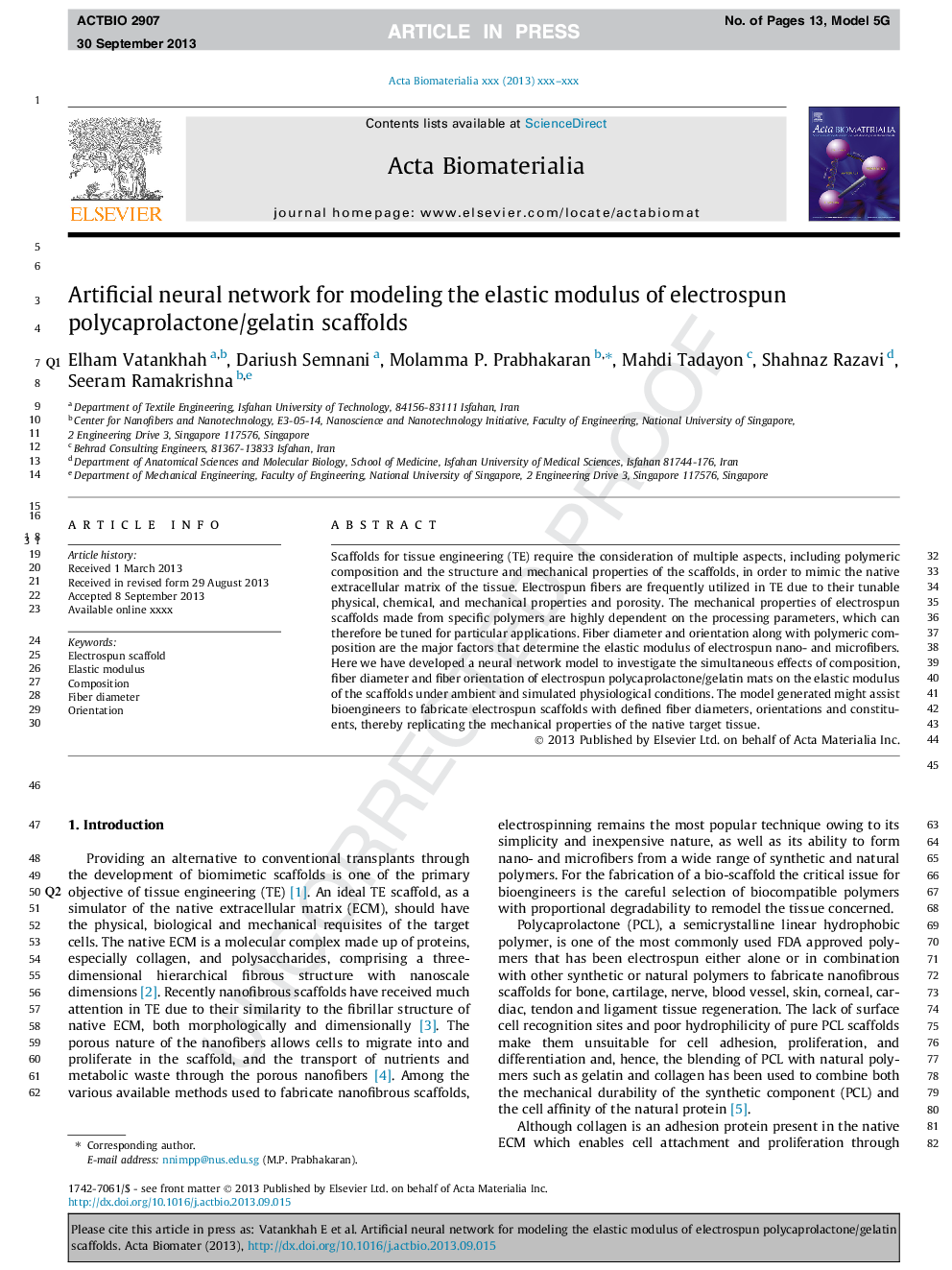| Article ID | Journal | Published Year | Pages | File Type |
|---|---|---|---|---|
| 10159331 | Acta Biomaterialia | 2014 | 13 Pages |
Abstract
Scaffolds for tissue engineering (TE) require the consideration of multiple aspects, including polymeric composition and the structure and mechanical properties of the scaffolds, in order to mimic the native extracellular matrix of the tissue. Electrospun fibers are frequently utilized in TE due to their tunable physical, chemical, and mechanical properties and porosity. The mechanical properties of electrospun scaffolds made from specific polymers are highly dependent on the processing parameters, which can therefore be tuned for particular applications. Fiber diameter and orientation along with polymeric composition are the major factors that determine the elastic modulus of electrospun nano- and microfibers. Here we have developed a neural network model to investigate the simultaneous effects of composition, fiber diameter and fiber orientation of electrospun polycaprolactone/gelatin mats on the elastic modulus of the scaffolds under ambient and simulated physiological conditions. The model generated might assist bioengineers to fabricate electrospun scaffolds with defined fiber diameters, orientations and constituents, thereby replicating the mechanical properties of the native target tissue.
Keywords
Related Topics
Physical Sciences and Engineering
Chemical Engineering
Bioengineering
Authors
Elham Vatankhah, Dariush Semnani, Molamma P. Prabhakaran, Mahdi Tadayon, Shahnaz Razavi, Seeram Ramakrishna,
